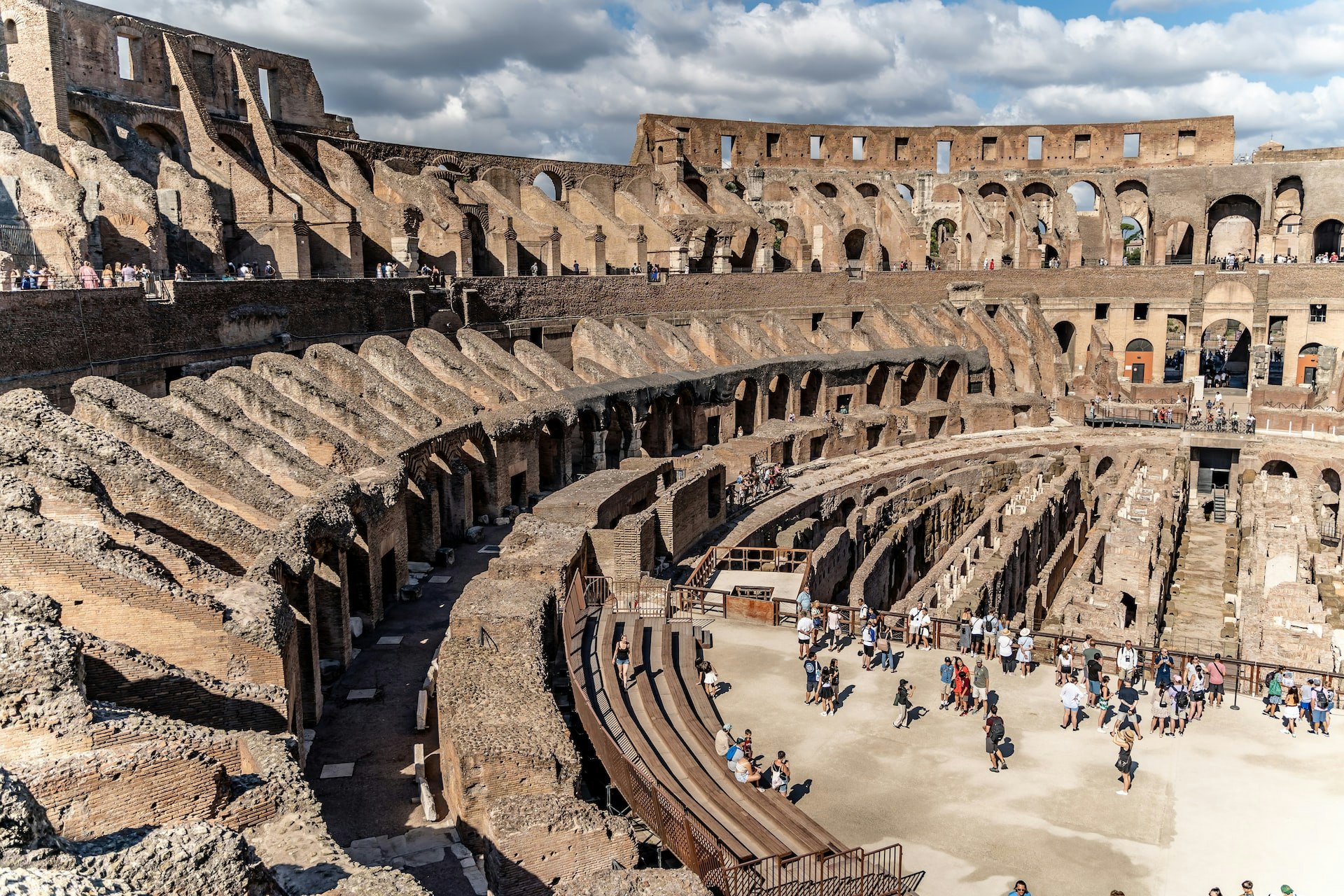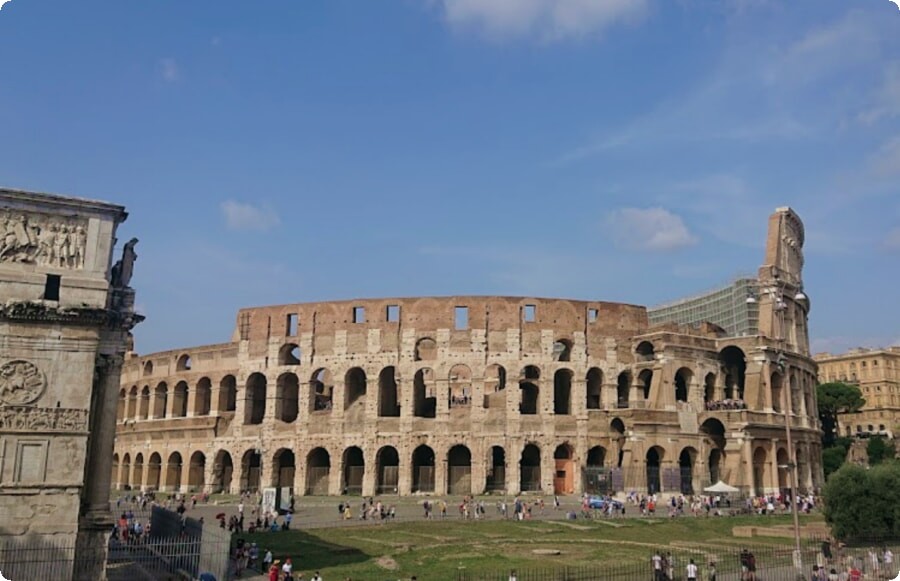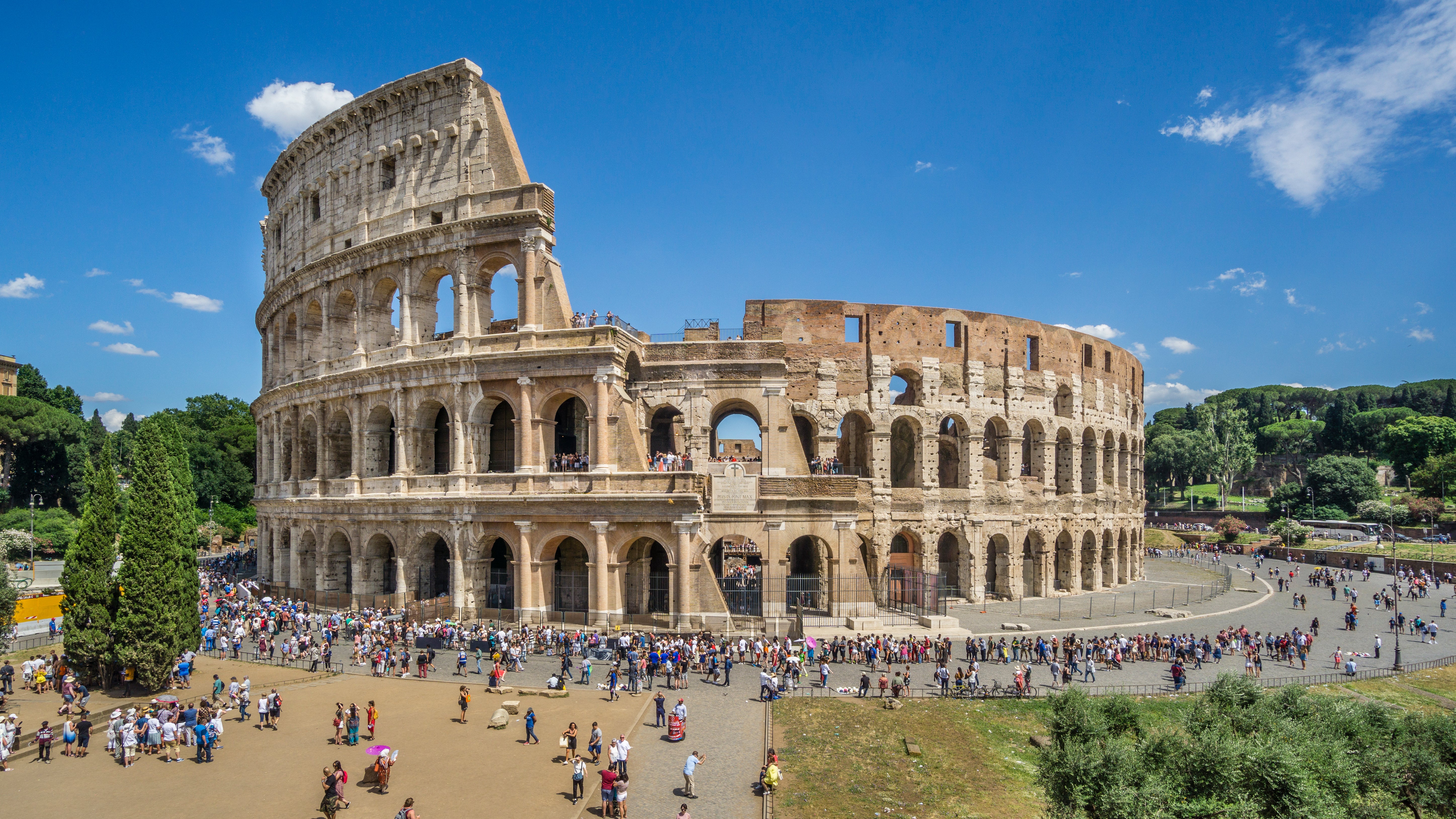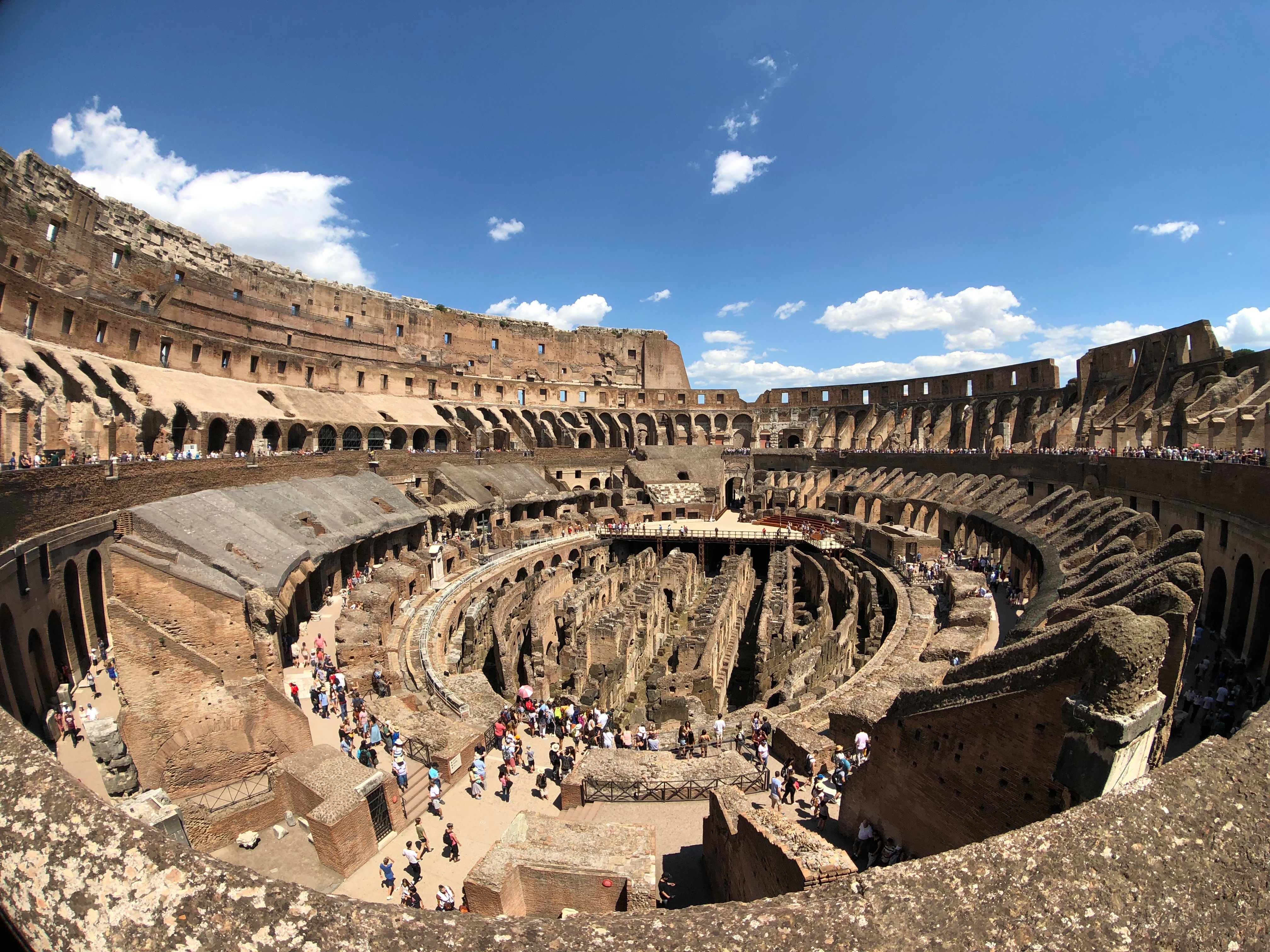The Colosseum in Rome is one of the most iconic symbols of the Roman Empire, showcasing the empire’s engineering brilliance. This monumental structure, built over two millennia ago, continues to stand as a testament to Roman ingenuity and architectural mastery.
Impressive Dimensions and Design
At 50 meters (164 feet) tall, the Colosseum was designed to impress. It’s roughly the height of a 16-story building, with a foundation extending 12 meters (39 feet) deep. Its massive size allowed it to hold between 55,000 and 75,000 spectators, depending on the event. Remarkably, the Colosseum was designed with vomitoria, specialized exits that could evacuate the entire arena within minutes, a sophisticated feature ensuring crowd safety.

Ingenious Use of Materials
The Romans used 100,000 tonnes of travertine stone in constructing the Colosseum. To secure the stone blocks, 300 tonnes of iron were incorporated into the design. These materials, coupled with Roman expertise, helped create a lasting structure. Inside, around 100 fountains were installed to provide water for spectators, showing a thoughtful consideration for the audience’s comfort.

The Velarium: A Precursor to Modern Stadium Roofs
The Colosseum’s velarium, a retractable awning, was an engineering marvel of its time. It allowed spectators to be shielded from the sun or rain, much like the retractable roofs of modern stadiums. Roman sailors were tasked with managing this system, showcasing the versatility of Roman technology in public spaces.

Purpose and Cultural Impact
The Colosseum was primarily built for entertainment, hosting brutal gladiatorial games, animal hunts, and mock naval battles. These events reflected the Roman values of strength, courage, and dominance. The Colosseum symbolized Roman power and control, serving as both a public spectacle and a demonstration of the empire’s ability to organize large-scale events.

Enduring Legacy
Despite the passage of time, the Colosseum endures as a symbol of Roman architectural ingenuity and cultural power. It continues to inspire modern stadium designs and stands as one of the greatest architectural feats in history.

